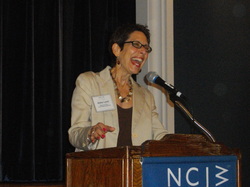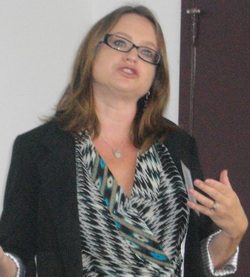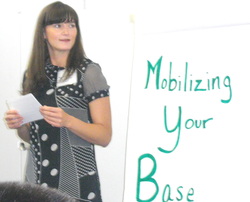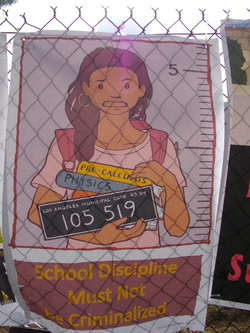
My article in today’s LA Progressive:
There have been more Popes elected than LA sheriffs in the last 80 years.
This year, progressives need to choose carefully in the LA County June election. Not only will we be voting for sheriff but will also fill the supervisory seats currently held by Gloria Molina and Zev Yaroslavky in the First and Third Districts. There may be low turnout and low interest for these contests but at the March 13 general meeting of the LA Regional Reentry Partnership–”LARRP”– I learned why these offices matter to anyone concerned with social justice, public safety, or the rational expenditure of taxpayer money.
But first, here’s what else I learned.
LARRP brings together service providers, government agencies, advocates, and clients all concerned with the reintegration into the community of the formerly incarcerated in ways that are humane and consonant with public safety.
The first time I attended a LARRP meeting, back in July, executive director Peggy Edwards pointed out, “Our reentry providers haven’t looked at themselves as homeless providers and our homeless providers haven’t looked at themselves as reentry providers.”
That has changed and collaboration is now the order of the day with open communication and computerized and filtered lists of clients and services.
Hazel Lopez of the Lamp Community, which provides services on Skid Row, said, “Reentry and homelessness are not separate issues. People coming out of prison are without housing and that is the definition of homeless.”
Danielle Wildkress of the Corporation for Supportive Housing explained, “The Skid Row Housing Trust didn’t think of themselves as reentry providers, but it turned out 60% of the people in their housing were on probation.”
Lopez described a new initiative, the Coordinated Entry Systems-Access to Housing, which has been funded in part by the United Way, while Wildkress explained the workings of the new Jail In-Reach 2.0 program which seeks to end recidivism and the cycle of homelessness.
Both initiatives follow similar models:
“Housing First“
Don’t expect clients to be stabilized physically, mentally, and free of substance abuse before offering them housing. Experience now shows that once people are actually living in permanent supportive housing, it becomes possible for them to get stabilized.
But where is such housing to come from? LA has nowhere near enough to meet the need. Troy Vaughn, also of Lamp, acknowledged, “There’s limited capacity to do development projects” for permanent supportive housing and even when a project can be funded and approved, “it doesn’t get up fast enough.” In the past, he explained, people assumed there had to be a single facility where residents and wraparound services could be housed together. Now Lamp is trying a new approach. Through negotiation, the owner of the Alexandria Hotel agreed to set aside 60
units for chronically homeless people coming out of the hospital. Ten have already moved in. Lamp agreed to find all the supportive services the residents need. Service providers will travel to the client. Vaughn hopes if the program is a success and the residents in the Alexandria remain stabilized, other property owners and landlords will join the effort.
Foster collaboration and streamline services
In LA County, as in many urban areas, people in great need often go without help as they find themselves unable to find their way through a landscape of scattered services and no unified effort. Both of these programs identify clients through street outreach or in-reach into hospitals and jails where they can begin work with a vulnerable person before discharge. Each client is paired with a “Navigator” who helps with documents and ID and makes connections to all appropriate and available supportive services. The Navigator makes sure there’s a bed available–even a temporary one–while actively working toward the goal of permanent supportive housing. When people leave jail, their own Navigator is waiting at the gate to greet them and remains a familiar, friendly presence in the client’s life until new relationships are built with the post-release team.
Put decision-making in the clients’ hands
Navigators offer options but clients are never coerced and are free to accept or reject housing offers. Every step of the way, clients explain what kinds of help they want and need. For example, Kelli Poole, an employment specialist with Chrysalis, who works with Jail in-Reach 2.0, recognizes that many people would write off her clients as unemployable. She said the clients themselves, however–far from wanting to rely on handouts–consider it a priority to prepare themselves for getting and holding down a job.
Prioritize the most vulnerable.
“Usually when a new building comes online in Skid Row,” Lopez explained, “people start lining up 2-3 days in advance to get an application.” Obviously–and as a survey confirmed–it’s almost exclusively the younger and healthier Skid Row residents who get the applications and housing.
People who are chronically homeless, repeatedly incarcerated, and disabled with physical, mental health, or substance abuse issues tend to be excluded. With the new programs, they are the priority. Not only is their need the greatest but, as constant users of ambulances, emergency rooms, hospital stays, jail and law enforcement resources, they are the greatest drain on public funds. Providing the most vulnerable with intensive and extensive services can save lives while saving money. A study of a similar program outside LA found that a chronically homeless person cost $67,376 in public taxpayer monies in a year while housing that person and providing full wraparound services cost only $19,399.
Which brings us to one of the reasons why we need to vote carefully for County Supervisors: What will the Supes do with such considerable savings? Put the money back into housing and reentry services or stash it elsewhere, continuing a tradition of neglect?
Lynne Lyman, the California state director for the Drug Policy Allianceand LAARP co-chair, Policy and Advocacy, cited other reasons for dissatisfaction with the current board.
Thousands of people in LA County jails have not been convicted of any crime and languish (at considerable taxpayer expense) behind bars only because they can’t afford bail. While the sheriff has stated his willingness to release some under supervision after a careful risk assessment, he does not have the authority to do so without approval from the county supervisors. It has not so far been possible to get a majority vote granting this authority.
While the supervisors were given $750 million by Sacramento to cover some of the realignment costs involved in sending prisoners back to the county from the state prison system, only a small percent was allocated for reentry services. Much of that small amount doesn’t even make it to the service providers and goes unspent.
Then there’s the plight of LA county’s Three-Strikers. In November 2012, California voters recognized the unjust and unintended consequences of life sentences handed down to nonviolent offenders. With Prop 36, they approved a measure that would offer the possibility of release. A year and four months later, 700 Los Angeles county Three-Strikers who are eligible for release remain incarcerated because they have not yet been afforded a day in court to show they have a place to go and a reentry plan. For men and women with chronic medical or psychiatric conditions–which have often been exacerbated during a decade or more in prison–or who have special needs such as wheelchair-accessible housing, a feasible reentry plan can remain out-of-reach, especially because the board of supervisors (unlike their counterparts in other counties) have refused to allocate any funding for Prop 36ers.
As for the race to fill the sheriff’s office, as voters consider the large field of candidates, it’s important to note that while the department has cooperated enthusiastically with the In-Reach program, here, too, there is a struggle over funds and an underutilization of community-based diversion programs.
Lyman notes that 40 women were released under an alternatives to incarceration program but though community placement is considerably less expensive than jail housing, the sheriff’s department money retained the savings and refused to pay anything for the beds. The alternatives program can reach only a limited number of appropriate individuals as long as nonprofits, already operating on austerity budgets, have to offer their full services for free, relying on fundraising and grant writing while the sheriff’s department holds onto all funding.
Lyman and co-chair Peter Laarman of Justice not Jails, suspecting that county officials really had no clue as to the level of professionalism and effectiveness of community-based residential programs, have led people from the sheriff’s department and the district attorney’s office on eye-opening tours of the Amity Foundation , the Tarzana Treatment Centers, and other programs that should be trusted and funded by LA County. A bed with full wraparound services at the Amity Foundation would cost the taxpayer one-tenth of the what the
sheriff would currently prefer to pay in sending prisoners to Kern County.
The sheriff and the supervisors continue to favor a $2 billion jail construction and expansion plan over the fiscally sound use of split sentencing and community-based programs that offer offenders realistic opportunities to turn their lives around.
There are two chances coming up to hear all the candidates vying for your vote for the office of sheriff.
The meeting concluded with a presentation by Pamela Jordan of A New Way of Life about her work as Housing Coordinator for the Reentry Family Reunification pilot program which now serves 25 formerly incarcerated individuals. The goal is to make it possible for the soon-to-be-released to move in with willing family members in Section 8 housing under the program of the Los Angeles City (not County) Housing Authority.
In the past, even families that very much wanted to welcome a member back home were held back by fear. Could they manage the person’s behavior? Would they be risking eviction if their loved one relapsed or committed a new offense?
The pilot program makes sure that their family member gets all necessary supportive services. The system will also sever culpability, so a law-abiding family will not be penalized if the person they’ve offered a home to should happen to reoffend.
What all three innovative programs–CES, Jail In-Reach 2.0, and Reentry Family Reunification–have in common (besides changing lives and neighborhoods for the better) is that they are small scale and underfunded with no guarantees they can continue.
This is why progressives need to ask direct questions of the countywide candidates well before the June 3rd election. When we simply let an offender out the gate with no place to go and no resources, we are often guaranteeing that he or she will reoffend. Continuing an emphasis on punishing people after the fact of crime instead of devoting resources to preventing crime and reducing recidivism serves no one. Good reentry programs benefit all of us. We need to know which candidates are ready to take an ethical and rational approach to homelessness and reentry and which are determined to continue a system that’s proved itself to be inequitable, ineffective, and unsustainable.







 RSS Feed
RSS Feed
